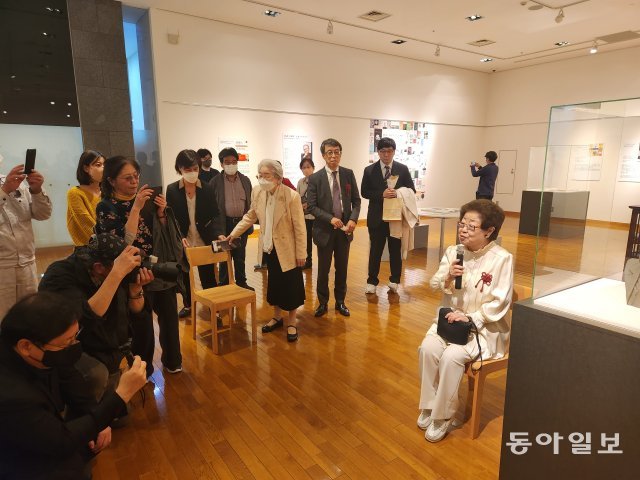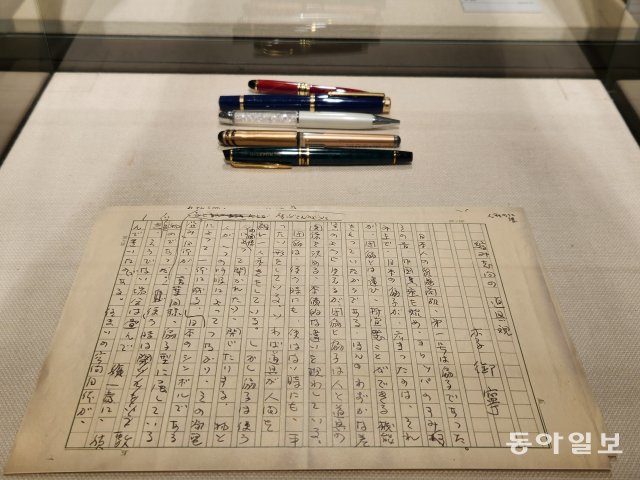Evaluation of “a classic book comparable to ‘Chrysanthemum Sword’”
On the 1st anniversary of the late former Minister of Culture Lee O-young, who passed away in February last year, a special exhibition commemorating him opened in Tokyo on the 24th.
In the special exhibition titled “Lee Lee O-young and Miniaturization-Oriented Japan,” which opened at the Korean Cultural Center in Shinjuku, Tokyo, the late Lee Eryeong’s wife Kang In-sook, director of the Youngin Literature Museum, Kazuyoshi Umemoto, chairman of the Japan International Exchange Fund, and Eriko Osaka, director of the National Museum of Art, Japan, etc. Representatives from the diplomatic and cultural circles visited.
Lee O-young, who created a syndrome in both Korea and Japan with the publication of ‘The Japanese with Reduction Orientation’ in 1982, is so famous in Japan that his name is still talked about. This is a book that captures the characteristics of Japanese culture from things that are common in Japan, such as bento boxes, fans, walkman, and bonsai.
The Nihon Keizai Shimbun said, “As a Japanese cultural theory written by a foreigner, it is a masterpiece that stands shoulder to shoulder with Ruth Benedict’s book ‘The Chrysanthemum and the Sword’” about the “reduction-oriented Japanese” after Lee O-young passed away last year. intellectual”.
 Kang In-sook (right), director of the Youngin Literature Museum, wife of the late Lee O-ryeong, speaks with visitors at the gallery talk, a special exhibition on the first anniversary of Mr. Lee O-ryeong, held at the Korean Cultural Center in Japan on the 24th. Tokyo =
Kang In-sook (right), director of the Youngin Literature Museum, wife of the late Lee O-ryeong, speaks with visitors at the gallery talk, a special exhibition on the first anniversary of Mr. Lee O-ryeong, held at the Korean Cultural Center in Japan on the 24th. Tokyo = Director Kang In-sook, who attended the opening ceremony, traced the memories of Lee O-young, who stayed in Tokyo at the invitation of the Japan International Exchange Fund in the early 1980s.
“I went to Japan alone, leaving my family in Korea to devote myself to research. You thought you weren’t going to see cherry blossoms in Japan. (Laughter) Still, I went to Tokyo for a while to take care of the housekeeping, and I still have vivid memories of taking the train together and going to Yuda Onsen in Yamaguchi Prefecture.”
Director Kang said, “’Chrysanthemum Sword’ is a comparison between the West and Japan, but Lee O-ryeong found Japanese characteristics by comparing them within Asia. He captured the characteristics of eating rice and using chopsticks along with Korea and China,” he said. “The fact that it is still being read means that the theory is correct.”
 A Japanese handwritten manuscript of ‘Japanese with a tendency to reduction’, which was unveiled at the special exhibition on the 1st anniversary of the late Mr. Lee O-ryeong. Tokyo =
A Japanese handwritten manuscript of ‘Japanese with a tendency to reduction’, which was unveiled at the special exhibition on the 1st anniversary of the late Mr. Lee O-ryeong. Tokyo = In the exhibition, Lee O-ryeong’s books, elementary school report cards, handwritten manuscripts, bags, and portable cassettes are on display. Director Umemoto, who has experience in handling Korea-related affairs at the Ministry of Foreign Affairs of Japan, said, “The must-read book when interacting with Korea was ‘Japanese for Reduction.’ I’ve never met him in person, but I’ve come to respect him very much from his books.”
Tokyo =
Source: Donga
Mark Jones is a world traveler and journalist for News Rebeat. With a curious mind and a love of adventure, Mark brings a unique perspective to the latest global events and provides in-depth and thought-provoking coverage of the world at large.